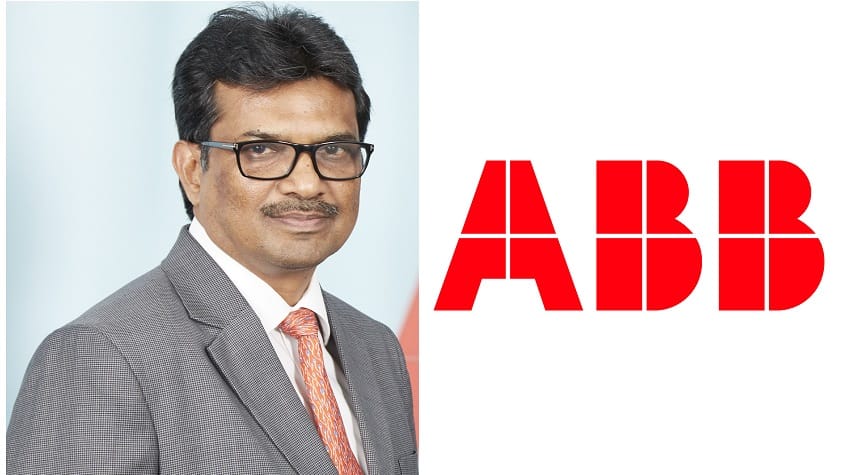1. How do you differentiate the functioning of South Asian markets, Middle East and Africa?
In the power industry, some trends reflect across the entire region, while others are specific to the socio-economic state of the country. These trends includethe adoption of renewables and low-carbon energysources, growing awareness of the benefits ofdigitalization and the need for power quality technologies.
Challenges are diverse across the region -in some markets it is about access to electricity, whileothers face challenges on reliability, integration of renewables and tariff management.
Many countries in South Asia are developing economies where power is critical to infrastructure development. Access to electricity is a priority, as power fuels nation-building activity such as transportation systems, industrial growth and urbanization.To increase power capacity and strengthenthe transmission and distribution infrastructure, utilities across South Asia are investing inupgradinggrids to higher voltage levels. Similarly, in the African markets, access to electricity is critical, with significant focus on rural electrification and reduction of losses.
Recently, the decline in oil prices has significantly impacted utility spend in the Middle East, despite huge power capacity additions. Unlike South Asia and Africa, the oil and gas sector is an important driver for the Middle East and slow movement of certain key projects have impacted these markets to some extent.
2. What are the biggest challenges in modernization of the South Asia region’s electricity transmission and distribution system?
Grid modernization reflects the evolution of the power grid in that country or region. The evolution itself is influenced by political, social and geographical factors. For example, while access to electricity is a key driving factorfor Africa or India, for Indonesia, the focus is on bringing power to its thousands of islands. In most countries, the rapidpace of developmentmeans grids must respond to fastdemand growth and swiftly adopt new technologies. This holds true for most developing markets such asVietnam, Indonesia, Philippines and Myanmar, as well as the Indian subcontinent.
Modernizationdepends what’s driving the demand – government policy, rate of industrialization or city development. It also depends on the level of investment that utilities are ableto make. Countries setting up greenfield power infrastructure can learn from mature economies, so are better placed to make technology choices that will serve the future. They also have an advantage when it comes to digitalization because they don’t have to deal with legacy technology compatibility or replacement.
Regional interconnected grids are becoming a reality. This is driven by increased interplay between the macro economies of the region and the need to manage power from distributed renewable generation sources. Yet, power systems across the region are less homogeneous, which presentsa challenge for the regional utilities to resolve for the next phase – a smarter, automated and more sustainable grid that supports regulatory, lifestyle and environment needs.
3. How can digital help build a more flexible and resilient electricity grid?
The digitalization of assets and power infrastructure offers utilities enhancedcontrol, increased operational efficiency and new business opportunities. Through grid digitalization utilities can benefit from up to 40% reduction in installation time, 50% less maintenance costs (thanks to predictive mainte¬nance) and can reduce outage times by half. This is because the Internet of Things (IoT) in the power grid will empower utilities with information about their equipment, systems and performance.
Our ABB AbilityTM solution, which is the platform that houses all ABB’s digital solutions for example, allows customers to close thesense-analyze-act loop. This loop entails physical sensors at the field or substation level that share information. The analyses of this information presents customers with various courses of action. Such asset management systems offer transparency for greater accuracy in forecasting, better planning and maintenance as well as for efficient operation, workforce planning and business control.
In addition,digitalization will allow countries and governments to participatein electricity markets. In the utility market, for example, ABB’s Market Management System (MMS) provides a digital marketplace where producers and customers of electricity offer and buy power optimizing supply and demand.
4. What impact can smart grid technology can bring to the household cost for energy use?
Just as the power grid has evolved, so has consumer interaction and consumption patterns. Consumers are sometimes power producers through home solar systems or other personal generation systems. They also may prefer to choose clean energy sources, or want more control over the way theyuse power if that could bring them savings. The digital grid will enable this new interaction between consumers and utility power providers.
With smart grid technology, energy consumers couldhave the ability to choose their supplier, generation type and perhaps exercise their preference for clean energy. Consumers will be able to choose from a much wider portfolio of pricing plans, they will also be able to choose whether to become prosumers by adding their own generation sources, either with or without battery storage capability. They will have the choice whether and how much to participate in demand response programs.
5. What opportunities for the utility distribution companies can be unlocked through digital initiatives?
A Deutsche Bank report stated that the Industrial Internet of Things can deliver 15% savings via operational excellence (OPEX) by making assets more efficient. Asset efficiency can be achieved if utility distribution companies invest in smart equipment, and deploy digitalized power systems. This investment will also unlock increased revenue through flexible business models.
Additionally, embedded digital technologies offer better operational performance and higher reliability. Asset management solutions predict potential issues, allowing preventive maintenance, and therefore higher customer satisfaction. Utilities can, therefore, plan their business better using information about upgrades; implement demand response programs that keep customers engaged, and avoid grid penalties by having accurate forecasting about demand.
6. What’s your forecast on the sustainability of distributed energy systems in the varied markets?
Reduced technology costshave been the main disrupter in shaping the power industry and a key driver for the adoption of renewables. With the decreasing costs of photovoltaic panels (PV), large scale integration of renewables, especially solar is expected across the world.
Technology progress and volume effects complement each other making PV electricity generation interesting because of governmental support and regulation, as well aseconomic competitiveness.Distributed energy systems like microgrids and nanogrids using renewable energy sources lay the foundation for long term viable solution for energy supply. At ABB, we believe that distributed energy systems can play a major part across the South Asia, Middle East and Africa markets.
7. What is ABB’s strategy towards advancing power grid technologies?
Constant innovation and technology differentiation has always been ABB’s key strength. ABB is a pioneer in technological developments with many ‘firsts’ in the sector. In keeping with our commitment to be at the forefront of technology for the power grid, our ABB Ability™ platform offers customers more than 180 solutions across our portfolio. ABB Ability™ solutions are typically combinations of products (a system) or services delivered with digitally for better connectivity.
Further, localization remains a key focus area for us. We have a wide footprint across the region and cater to a major portion of the market. We have a focus on forming alliances to support us in developing new markets and technologies. We lead the way in developing and introducing concepts like PowerStoreTM – the first plug and play microgrid system – and in energy storage. Apart from products and systems, we are also a leading supplier of enterprise software and services in the region and we will continue to cater to utility, industry, infrastructure and transportation customers.




































